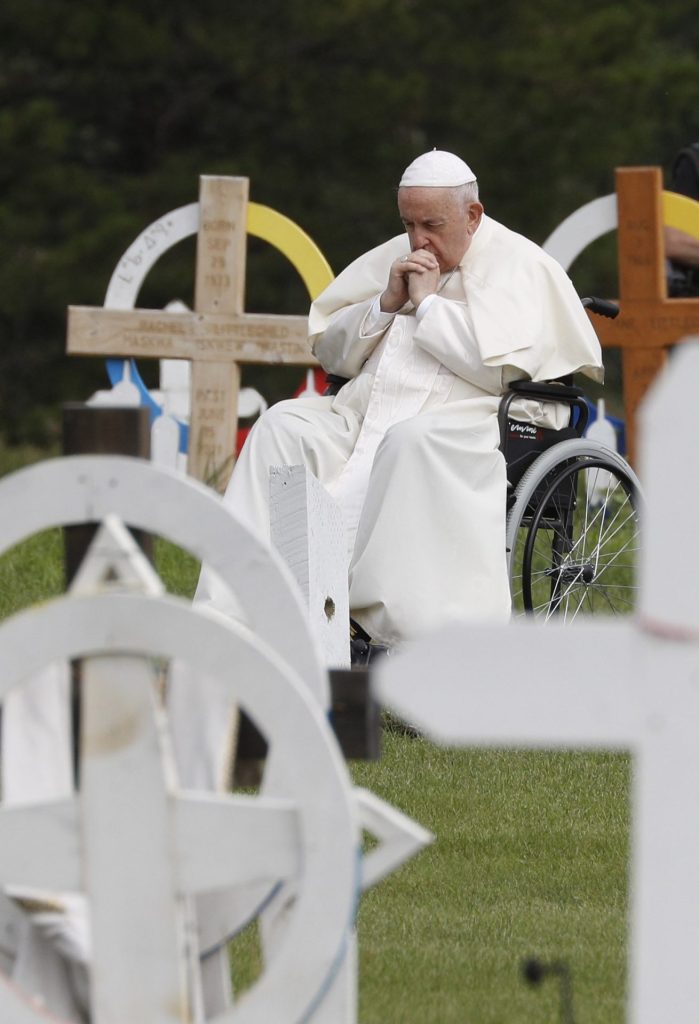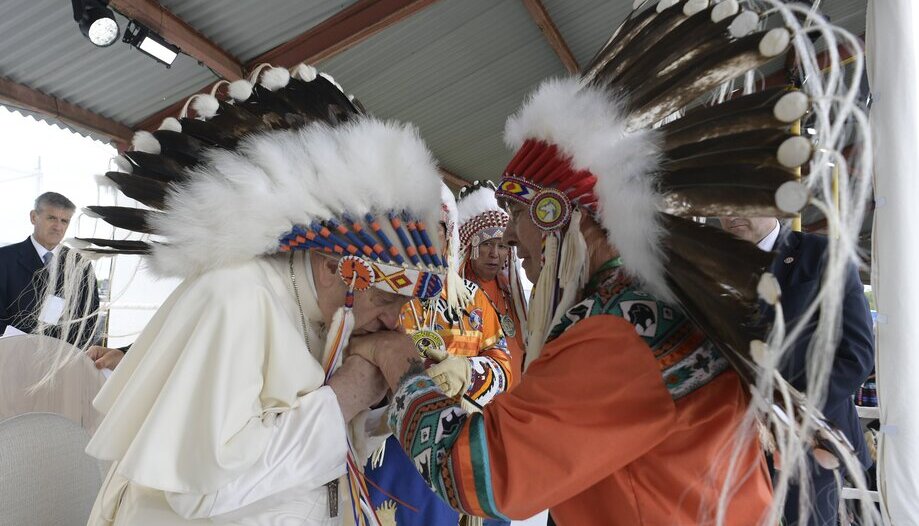Since last Sunday Pope Francis has embarked on an intensive apostolic and penitential trip to Canada. His encounters with indigenous peoples are charged with great symbolic value. Although this pilgrimage is not without its difficultiesThe first impressions are positive.
At its meeting on Monday, July 25 with indigenous peoples First Nations, Métis and InuitPope Francis said: "I was waiting for this moment to arrive so that I could be among you. From here, from this sadly evocative place, I would like to begin what I desire in my heart: a penitential pilgrimage. I come to your native lands to tell you personally that I am grieving, to implore God for forgiveness, healing and reconciliation, to express my closeness to you, to pray with you and for you".
The Pope's words clearly expressed his sorrow for the situation suffered by the indigenous peoples, "in particular, for the way in which many members of the Church and religious communities cooperated, also through indifference, in those projects of cultural destruction and forced assimilation of the governments of the time, which ended in the system of residential schools". In his speech he asked for forgiveness seven times.
Gestures with footprint
One of the first people Pope Francis was able to greet was a woman who passed through one of the boarding schools. The kiss on the hand with which he said goodbye has become one of the iconic images of these days. It shows the humility with which the Pope has come to Canada and the response of the indigenous leaders is corresponding to this mood. Therefore, it is not surprising that after the request for forgiveness the Pope received a traditional Indian hat, as a token of affection and recognition.
Another image of the trip was Pope Francis' prayer at a cemetery in Maskwacis, some 70 kilometers south of Edmonton. The Pope's heartfelt prayer at the graves of some of the children of the boarding schools is another meaningful gesture.










